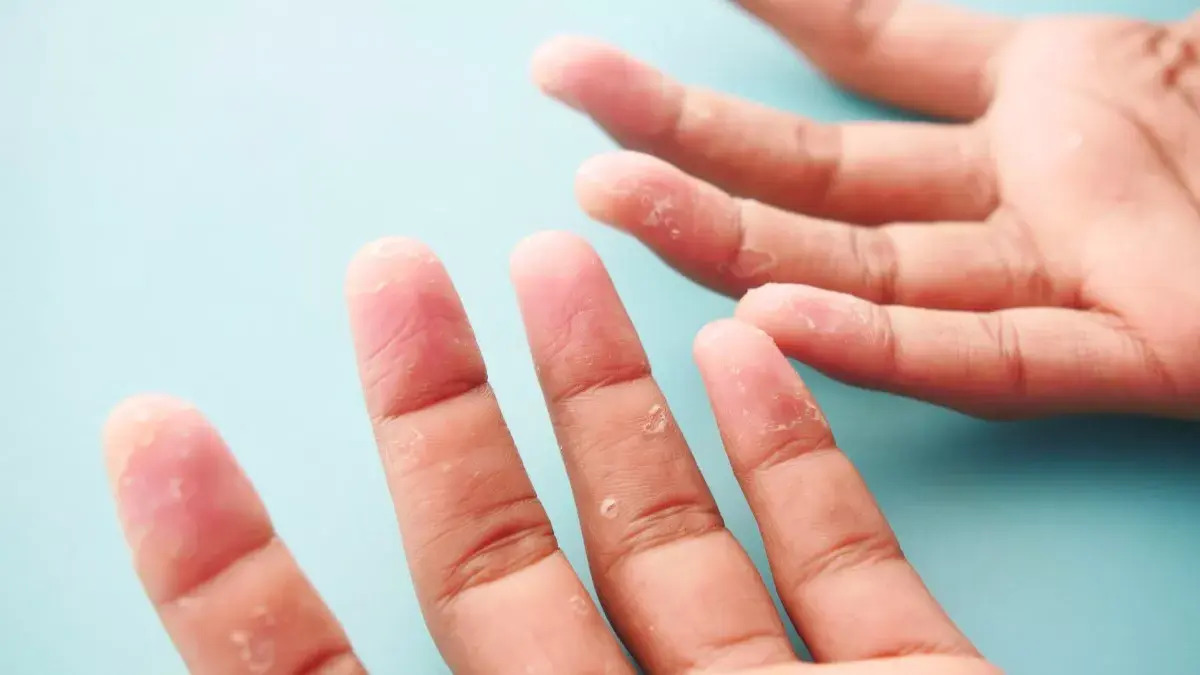
Pompholyx, also known as dyshidrotic eczema, is a skin condition that causes small, itchy blisters on the hands and feet. What triggers pompholyx? The exact cause remains unclear, but stress, allergies, and moist environments often play a role. How can you manage it? Treatment usually involves topical steroids, moisturizers, and avoiding irritants. Who gets it? Anyone can develop pompholyx, but it’s more common in adults under 40. Why does it matter? Understanding this condition can help you manage symptoms and improve quality of life. Is it contagious? No, pompholyx isn’t contagious, so you can’t catch it from someone else.
What is Pompholyx?
Pompholyx, also known as dyshidrotic eczema, is a skin condition characterized by small, itchy blisters on the hands and feet. It can be quite uncomfortable and sometimes painful. Let's dive into some interesting facts about this condition.
-
Pompholyx is a type of eczema. It specifically affects the hands and feet, unlike other forms of eczema that can appear anywhere on the body.
-
The exact cause is unknown. While the precise cause remains a mystery, factors like stress, allergies, and damp hands or feet can trigger outbreaks.
-
It often starts suddenly. One day your skin might be fine, and the next, you could have an outbreak of itchy blisters.
-
Blisters can be very itchy. The intense itching can make it difficult to resist scratching, which can worsen the condition.
-
Blisters are usually small. They often appear in clusters and can be filled with fluid.
-
It can affect both hands and feet. While some people may only get it on their hands or feet, others can experience it on both.
-
Stress is a common trigger. Emotional stress can lead to flare-ups, making it important to manage stress levels.
-
It can be seasonal. Some people notice that their symptoms worsen during certain times of the year, particularly in warmer months.
-
Sweating can exacerbate symptoms. Excessive sweating, especially on the hands and feet, can make the condition worse.
-
It can be chronic. For some, pompholyx is a long-term condition that requires ongoing management.
Symptoms of Pompholyx
Understanding the symptoms can help in identifying and managing the condition effectively.
-
Itching is a primary symptom. The itching can be intense and persistent, often leading to scratching and further irritation.
-
Blisters are another key symptom. These blisters can be filled with clear fluid and may burst, leading to crusting and peeling.
-
Redness and inflammation. The affected areas can become red and swollen, adding to the discomfort.
-
Painful skin. The blisters and subsequent cracking of the skin can cause pain, especially when using your hands or walking.
-
Dry, flaky skin. After the blisters heal, the skin can become dry and start to peel.
-
Thickened skin. Over time, repeated flare-ups can lead to thickened, tough skin on the affected areas.
-
Nail changes. In some cases, the condition can affect the nails, causing them to become pitted or ridged.
-
Burning sensation. Some people experience a burning feeling in the affected areas, adding to the discomfort.
-
Secondary infections. Scratching can lead to breaks in the skin, increasing the risk of bacterial infections.
-
Scarring. Severe or repeated outbreaks can lead to scarring, particularly if the blisters are scratched or burst.
Treatment and Management
Managing pompholyx involves a combination of treatments and lifestyle changes to reduce symptoms and prevent flare-ups.
-
Topical steroids are commonly used. These can help reduce inflammation and itching.
-
Moisturizers are essential. Keeping the skin hydrated can prevent dryness and cracking.
-
Avoiding triggers is crucial. Identifying and avoiding triggers like stress, allergens, and excessive sweating can help manage the condition.
-
Antihistamines can help. These can reduce itching and improve sleep.
-
Cool compresses provide relief. Applying a cool, damp cloth to the affected areas can soothe itching and reduce inflammation.
-
Phototherapy is an option. In severe cases, light therapy can be used to treat the condition.
-
Antibiotics for infections. If a secondary bacterial infection occurs, antibiotics may be necessary.
-
Avoiding irritants. Harsh soaps, detergents, and other irritants can worsen symptoms, so it's important to use gentle, fragrance-free products.
-
Wearing gloves. Protecting your hands with gloves when doing household chores can prevent irritation.
-
Stress management techniques. Practices like yoga, meditation, and deep breathing can help reduce stress and prevent flare-ups.
Living with Pompholyx
Living with pompholyx can be challenging, but with the right strategies, it is possible to manage the condition effectively.
-
Regular skin care routine. Establishing a consistent routine can help keep symptoms under control.
-
Dietary changes. Some people find that certain foods can trigger flare-ups, so keeping a food diary can be helpful.
-
Hydration is key. Drinking plenty of water can keep the skin hydrated from the inside out.
-
Wearing breathable footwear. Shoes that allow air circulation can reduce sweating and prevent flare-ups on the feet.
-
Avoiding hot showers. Hot water can dry out the skin, so it's better to use lukewarm water.
-
Using hypoallergenic products. These products are less likely to cause irritation and can be gentler on sensitive skin.
-
Regular check-ups. Seeing a dermatologist regularly can help monitor the condition and adjust treatments as needed.
-
Support groups. Connecting with others who have pompholyx can provide emotional support and practical tips.
-
Educating yourself. Learning about the condition can empower you to manage it more effectively.
-
Patience is important. Managing pompholyx can be a long-term process, so it's important to be patient and persistent with treatments and lifestyle changes.
Final Thoughts on Pompholyx
Pompholyx, also known as dyshidrotic eczema, affects many people worldwide. This skin condition causes itchy, fluid-filled blisters on the hands and feet. While the exact cause remains unknown, factors like stress, allergies, and moisture can trigger flare-ups. Treatments range from topical steroids to lifestyle changes, such as avoiding irritants and keeping skin dry.
Understanding pompholyx helps in managing symptoms effectively. If you suspect you have this condition, consult a healthcare professional for a proper diagnosis and treatment plan. Staying informed and proactive can make a significant difference in your quality of life.
Remember, you're not alone in this journey. Many resources and support groups are available to help you navigate the challenges of living with pompholyx. Stay positive, and take control of your skin health.
Was this page helpful?
Our commitment to delivering trustworthy and engaging content is at the heart of what we do. Each fact on our site is contributed by real users like you, bringing a wealth of diverse insights and information. To ensure the highest standards of accuracy and reliability, our dedicated editors meticulously review each submission. This process guarantees that the facts we share are not only fascinating but also credible. Trust in our commitment to quality and authenticity as you explore and learn with us.


